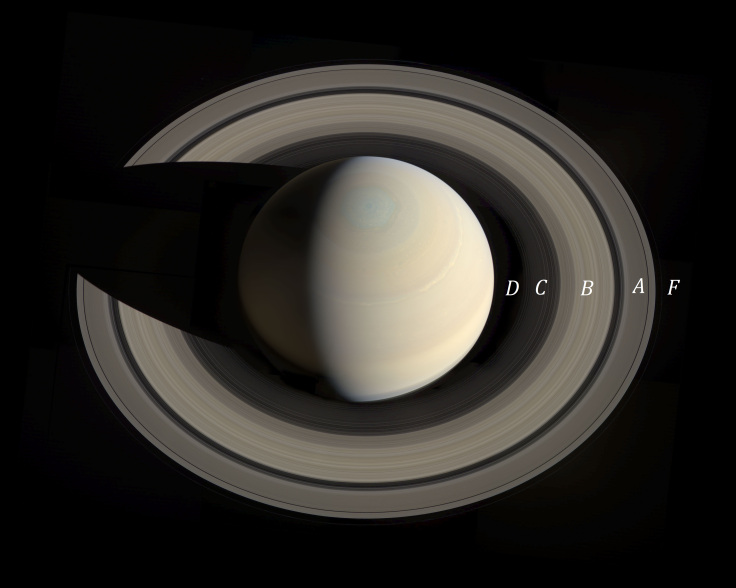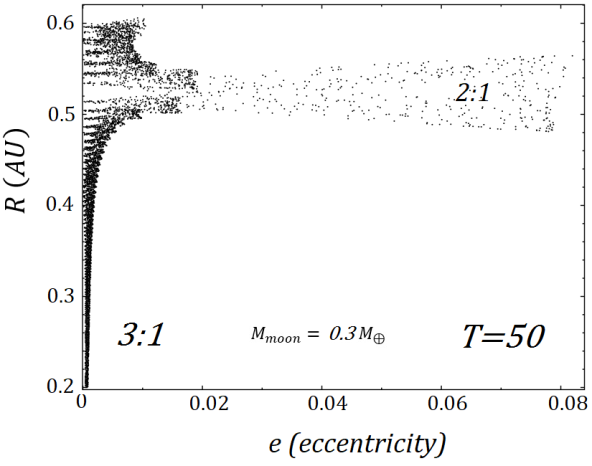A new paper has been accepted for publication in MNRAS (Monthly Notices of the Astronomical Society) by Dr Phil Sutton titled “Mean Motion Resonances With Nearby Moons: An Unlikely Origin For The Gaps Observed In The Ring Around The Exoplanet J1407b”.
J1407b is a large exoplanet (more than 20 times the mass of Jupiter) orbiting its star over 400 lightyears away from Earth. Like many exoplanets before, it was discovered by the transit method which detects a dip in a star’s brightness as a planet passes in front it. However, the star J1407 showed a prolonged and irregular dip in brightness that was attributed to a ring orbiting the planet 200 times larger than Saturn’s ring system. Modelling of this transit showed it was not uniform and instead had gaps. In Saturn’s rings gaps are caused by nearby moons outside the rings or smaller moons inside the rings that gravitationally clear a gap.

Figure 1 | A gap between the B and A ring, which can be seen from Earth, is caused by an orbital resonance with the nearby moon Mimas. Ring particles orbit twice for every orbit of the moon causing a resonance effect (2:1).

Figure 2 | Daphnis, one of Saturn’s many moons, carves out a gap from within the A ring.
In the paper computer simulations we carried out to investigate if nearby moons could create a gap at the locations predicted by the transit. Similar to how Mimas creates the Cassini Division. It was discovered that it was not possible to form gaps in the ring due to moons orbiting outside the ring. In order to create the expected gaps in the ring a moon would need to be too close to outer edge of the ring system, which would cause significant distortion of the ring.

Figure 3 | The radial and angular position of ring particles taken at a time of a) 10 orbital periods and b) 50 orbital periods for ring particles located at 0.4AU (Astronomical Units). The moon is located at the 3:1 MMR (Mean Motion Resonance) with ring particles at 0.4AU. In this scenario we find that the moon is far enough away that there is no significant distortion or scattering of the ring edge with a moon mass 0.3 Earth masses. No obvious perturbation of particles located at 0.4AU is observed during the same time period with only one gap formed at the 2:1 MMR (0.523 AU).

Figure 4 | The eccentricity and radial position of ring particles is shown at a time of 50 orbital periods of particles located at . This is the same time and model as in Fig 2b. The nearby moon is placed at a 3:1 MMR with ring particles at . There is only evidence of the 2:1 MMR located at in this plot. The eccentricity shows where ring particles are being perturbed by the moon with the location of resonances more clearly identified.
Further details on other models using different locations of the moon can be found here.
Reblogged this on Dr Phil Sutton.
LikeLike
Reblogged this on Centre for Computational Physics.
LikeLike